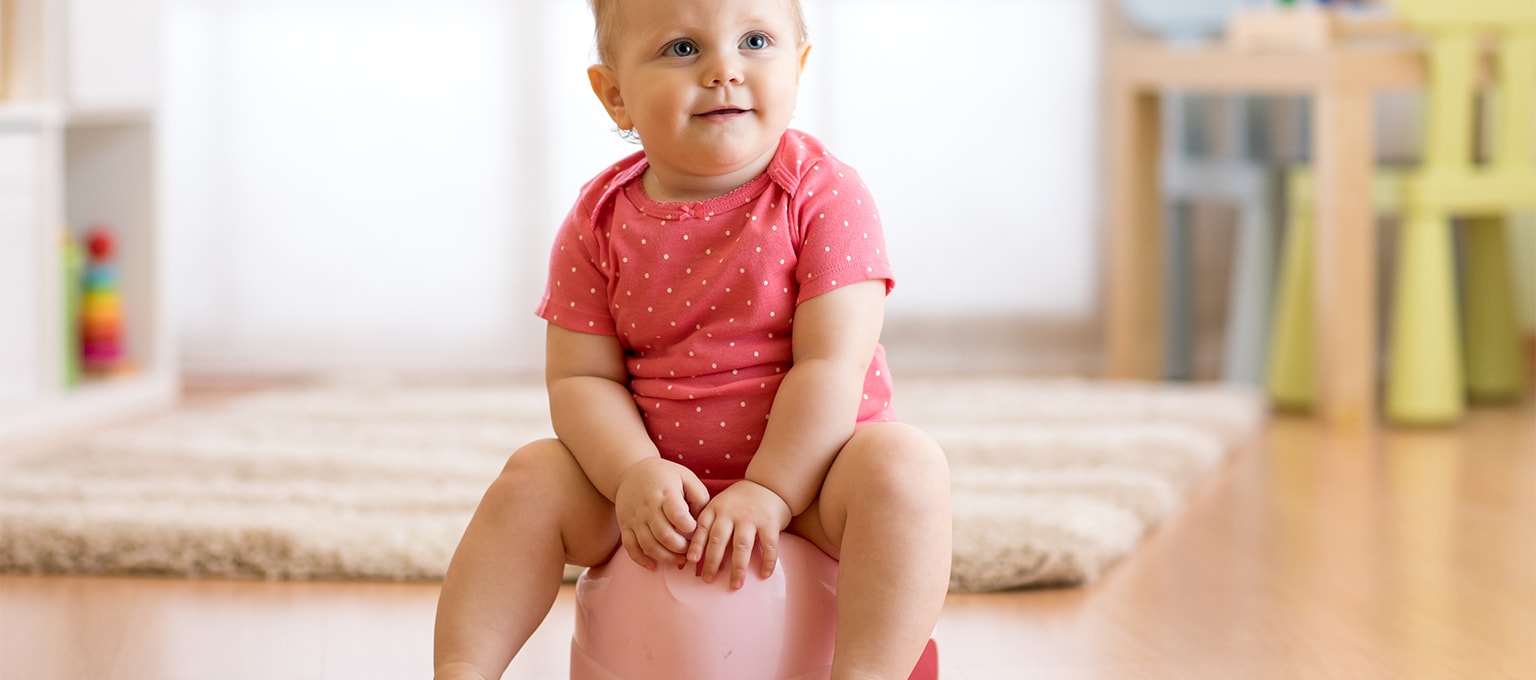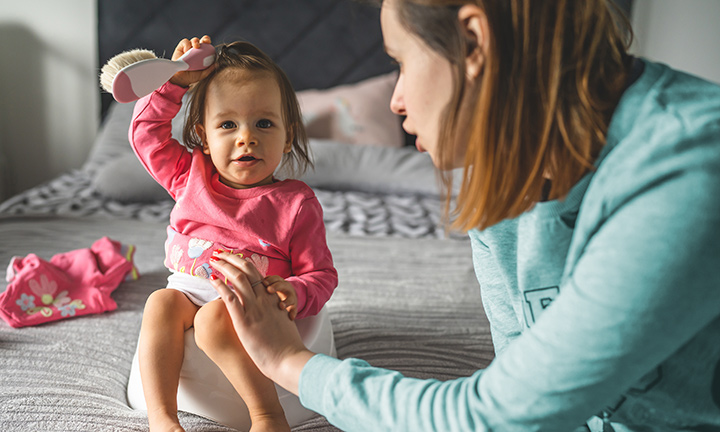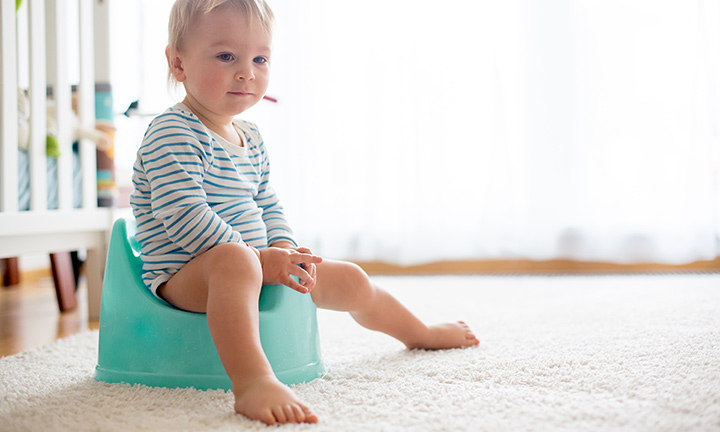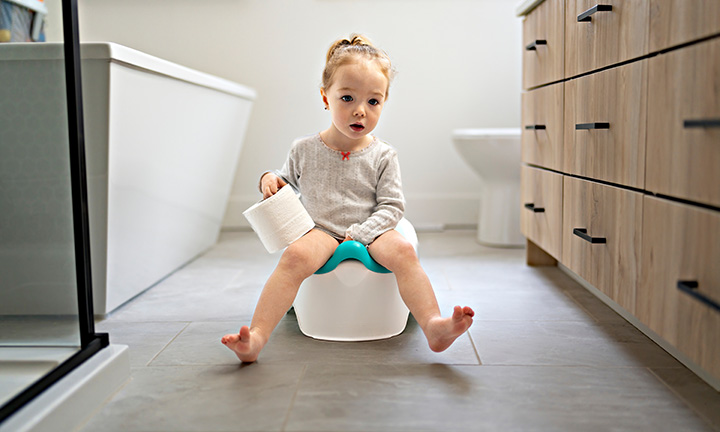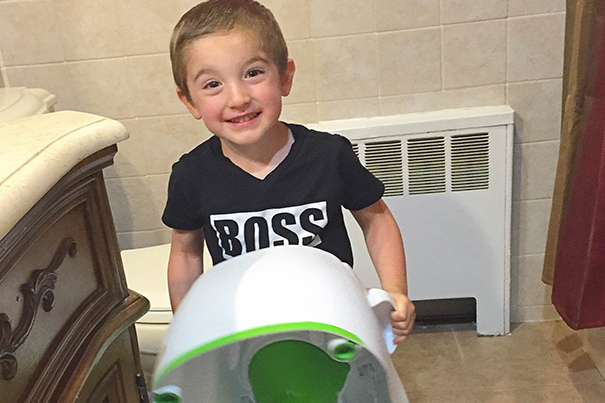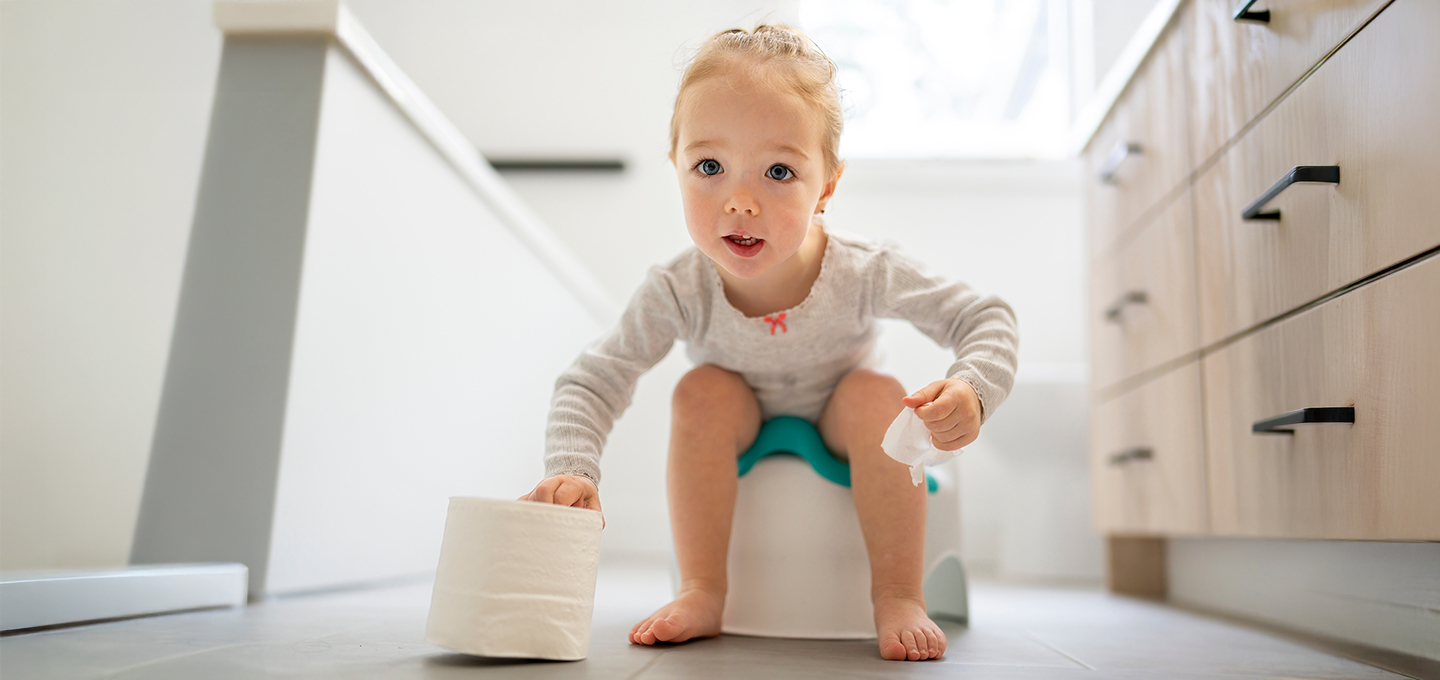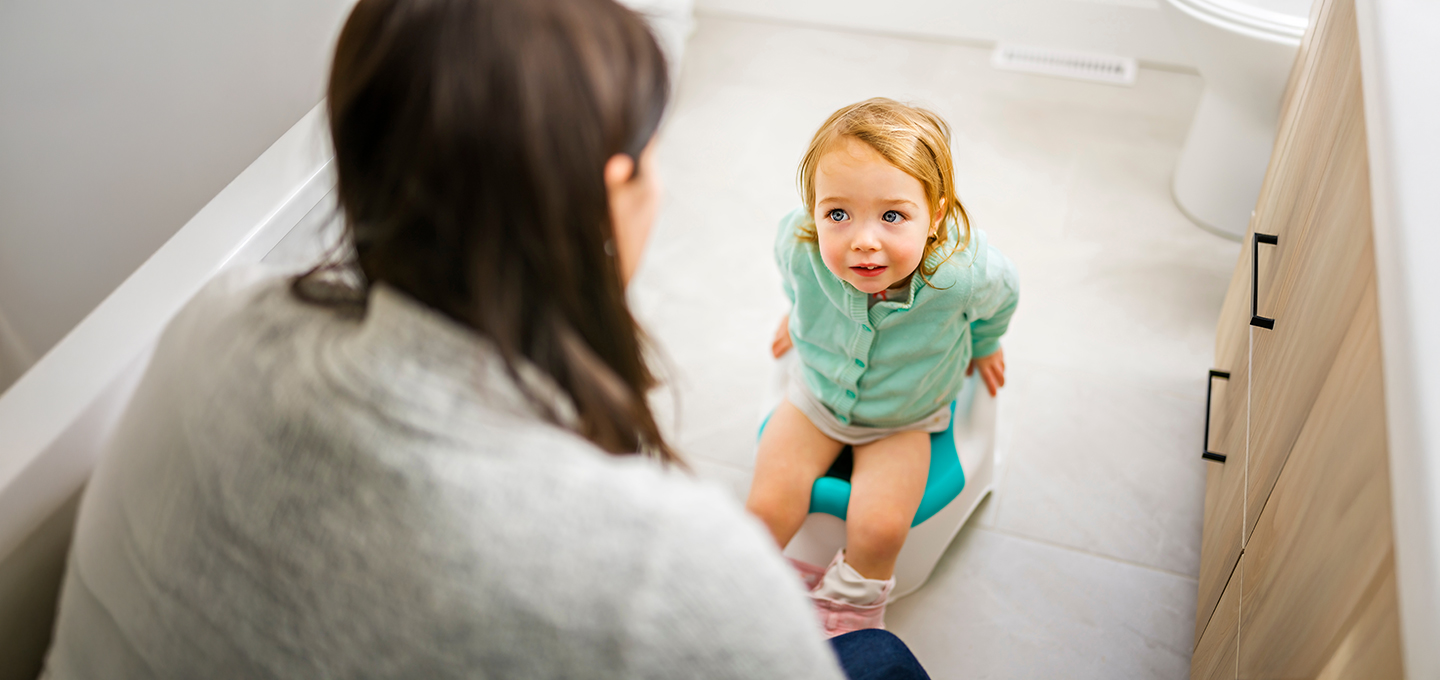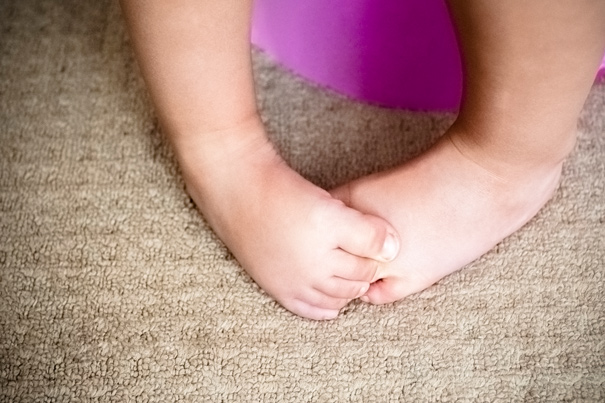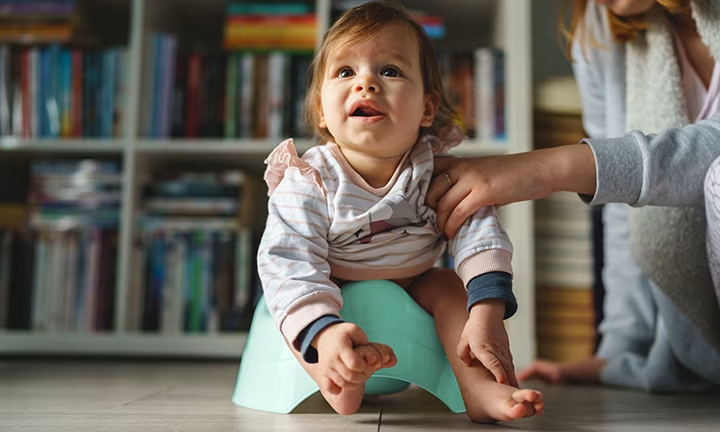
13 Tips and Tricks for Nighttime Potty Training
Key Takeaways
If your child is doing a good job using the potty during the day, chances are you're ready to tackle nighttime potty training next. Typically, children master daytime potty training before moving on to potty training at night. What’s different about these two processes, and how do you know when to start overnight potty training? Read on for all the details, plus a few tips and tricks to make this undertaking easier for both you and your toddler.
Daytime vs. Nighttime Potty Training
Age 2 is often when children start potty training, though some children are ready earlier, and others need a little more time. Daytime toilet training involves your little one recognizing the urge to pee and getting to the potty or toilet on their own or with the help of a trusted adult. By the end of the process, your child will be able to use the toilet and no longer rely on diapers during the day. Nighttime potty training comes later, after daytime toilet training is successful. It’s important to know that most likely your toddler will still need to use diapers at night and possibly during naptime as you work on daytime potty training. Keep in mind that the timeline for nighttime potty training success varies from child to child, and that some kids need more time to master overnight dryness; bowel control usually develops early on. Some children aren't able to stay dry at night until they’re around 5 or 6 years old, and that’s OK. Pick up a few insights about sleeping strategies that can support your nighttime potty training efforts by watching the video below.
When to Potty Train at Night
When to potty train at night will depend on your toddler. Although you can incorporate some nighttime potty-training techniques into daytime training, it’s best to wait until your child is regularly using the toilet before focusing on staying dry overnight. Children develop at different paces, so there’s no one-age-fits-all when it comes to potty training at night. However, if your child begins potty training at about 2 years old, they might be ready to start working toward nighttime dryness by age 3.
Tip
Don’t push your child into potty training if they’re not ready. Research has shown that starting too early prolongs the process, which means waiting will help your child reach success at an earlier age.
Is Nighttime Potty Training Possible?
In a word, yes! As a parent, it’s probably challenging to wrap your head around potty training at night when your child is sound asleep, but nighttime potty training is not only possible but it’s also doable. Here are a few things to keep in mind:
13 Tips on How to Potty Train at Night
To help you and your little one along the way, we’ve compiled 13 of our best nighttime potty-training tips and tricks.
1. Encourage Your Toddler to Pee Before Going to Sleep
This is one of the best and most straightforward tips for how to potty train overnight. While potty training—even in the early stages of daytime toilet training—build one last bathroom trip into your child’s bedtime routine. This allows them to empty their bladder before falling asleep, which could help them avoid nighttime wetting.
2. Follow a Calm Bedtime Routine
Speaking of bedtime routines, yours would ideally incorporate quiet, relaxing activities, such as reading a book together. Ending your child’s day on a calm note helps get your little one get ready to drift off to sleep and helps cut down on stress, which is linked to nighttime bed-wetting and could cause a setback in children who are nearly or fully potty trained.
3. Create a Morning Routine That Starts With Peeing
To reach success with potty training at night, you might also want to create a consistent wake-up routine for the morning, one that starts with going to the bathroom. While a nighttime routine encourages your toddler to empty their bladder before falling asleep, a morning routine might help them wait to pee until waking up.
4. Use Training Pants
Once your little one is successful with daytime potty training, you can make the switch from diapers to training pants at nighttime. Using potty-training pants such as Pampers Easy Ups rather than diapers allows children to differentiate between the stages of potty training. Easy Ups make it easy for your toddler to pull up and down their training pants independently. These super soft, comfortable, and breathable training pants fit just like real cotton underwear allowing your toddler to feel like they have transitioned out of diapers! It’s not uncommon for a 4- or 5-year-old to still be wearing training pants at night during their time potty training!
5. Offer Reassurance
Your main goal is to make the nighttime potty training process as positive and stress-free as possible for your child, which means reassuring them when potty training accidents happen. Remind your toddler that all children are still learning how to wake up to pee at this age and that it’s totally OK to have an accident.
6. Opt for Praise, Not Punishment
Remember that your toddler can’t control whether or not they wake up to pee and that it’s a waiting game for their bladders to mature. Scolding, blaming, or punishing a child for peeing at night will only hinder progress and cause stress or fear. Instead, praise your toddler when nighttime potty training is successful, such as when they wake up dry or get up to use the toilet at night.
7. Give Permission to Wake You Up if Needed
Perhaps your child is scared to wake up and use the toilet at night when it's dark. When you start potty training at night, give them permission to come to you and wake you up if they need help or feel scared going to the toilet alone. Of course, you don’t want this to last forever, but during the beginning stages, your toddler may need a little extra support.
8. Make the Toilet Accessible
Just like offering to take them to the toilet at night, make sure the journey to the bathroom isn’t scary for your child. This could mean keeping their bedroom door and bathroom door open at night and/or putting night-lights in your child’s room, the hallway, and the bathroom. Get your little one involved and let them choose their own night-light! They may even be excited to wake up and see their favorite animals or cartoon characters leading the way to the toilet.
9. Explain Why Bed-wetting Happens
Keeping your child in the loop about the ups and downs of nighttime potty training and why they may still wet the bed may help, especially as they get older. Although nocturnal enuresis (bed-wetting) doesn’t have a distinct cause, family history is often a factor, so it may be comforting to your child if they know that Mommy, Daddy, or a sibling also went through this process.
10. Make the Switch to Underwear When Ready
Your child will probably feel excited about wearing “big kid” underwear overnight, and that’s a good thing because you won’t want them to wear training pants long-term when potty training. But because success with nighttime potty training can ebb and flow, it may be best to wait until your child wakes up with dry training pants
This success may mean your toddler is ready to wear underwear to sleep, although accidents will most likely still happen.
11. Use a Plastic Sheet
Remember that it’s common for children to wet the bed during nighttime potty training (or even relapse at times). Once your little one starts using regular underwear, they’ll most likely experience multiple potty-training accidents at night. To help you with the cleanup, you can use a plastic sheet to protect your child’s mattress.
12. Prepare for Accidents
In addition to covering the mattress, you can prepare for potty-training accidents at night in other ways. Some children might wake up after wetting the bed and cry out to you. Just in case, put some supplies within easy reach, such as a pack of training pants, wipes, a clean sheet, and a change of underwear or pajamas. When you’re prepared and calm, it will help your child stay calm as well.
Tip
Check with your toddler’s preschool about storing a change of underwear and clothes at the school. Many schools encourage this or make it mandatory.
13. Practice Patience
Throughout the entire process of potty training at night, remember to practice patience, which along with the right timing will lead to success. When children feel calm and secure, they'll make good progress with overnight potty training, and it’s up to you as the parent to set the tone.
When to Consult Your Child’s Healthcare Provider
Even if you follow our tips above about how to potty train a toddler at night, nighttime potty training can still take a long time. Remember that it’s normal for a kid who is 3, 4, or even 5 to be working on nighttime potty training. Managing bed-wetting is a key part of potty training at night; note that some children may be dealing with this issue on occasion until adolescence. Keep the following in mind:
Contact your child’s healthcare provider if your little one is older than 5 and still wetting the bed at night consistently despite nighttime potty-training efforts. They most likely just need a little extra time with potty training, but the provider can look for signs of any issues and offer advice or treatment options, if necessary.
FAQS AT A GLANCE
Children develop at different rates, so there’s no standard age that a child “should” be dry at night. However, if your child is still wetting the bed at night after age 5, contact their healthcare provider to get more specific advice regarding your child’s unique situation.
The Bottom Line
Children develop and reach success at their own unique rates, and that holds true for completing nighttime potty training. Although some kids achieve dry nights faster than others, it’s common for bed-wetting to occur regularly up to 5 years old and occasionally into adolescence. Potty training at night is a very gradual process, as you must wait for your child’s bladder to mature and the brain to learn to send signals alerting your little one to wake up when it’s time to pee. Children don’t usually achieve this until about 6 years old, so your child is almost guaranteed to experience accidents throughout nighttime potty training—and that’s OK. The best tips on how to potty train overnight include staying patient and positive and offering encouragement. Some additional tips and tricks include the following:
Contact your child’s healthcare provider if they’re still experiencing bed-wetting after age 5. Most likely, your child just needs a little extra time to reach this nighttime potty-training milestone, but the provider can help rule out any problems, offer advice, and suggest treatments if required. Even wet nights aren’t so bad when you can reward yourself with your purchase of training pants with the Pampers Rewards App!
- Book: Caring for your baby and young child, birth to age 5, Sixth Edition Paperback – November 2, 2014 by American Academy of Pediatrics (Author)
- Healthy Children: Bedwetting
- Healthy Children: Stages of Toilet Training
- Kids Health: Toilet Training
- Mayo Clinic: Bedwetting
- Mayo Clinic: Potty Training
Read more about Toddler
Related Articles
Join a World of Support
through Pregnancy and Parenthood.
TRACK WITH TOOLS
LEARN WITH EXPERTS
GET REWARDED
